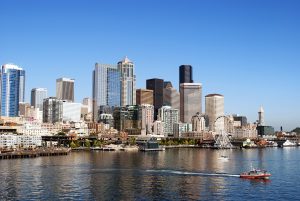 Low-Income Communities Are Especially Vulnerable
Low-Income Communities Are Especially Vulnerable
Across the nation heatwaves, droughts and floods have become more frequent and more severe, increasing risks to people, homes, and infrastructure. Between 2011 and 2013, the U.S. experienced 32 weather events that each caused at least one billion dollars in damages.
Low-income communities are on the front lines of this damage, and they continue to be the most vulnerable. From the Chicago heatwave of 1995 that led to 739 deaths to Hurricane Katrina and Superstorm Sandy, these areas are often the first victims of extreme weather and the last to recover from devastation.
Investing in at-risk communities before disaster strikes is one of the most cost-effective ways to protect residents and property while increasing their ability to weather the severe storms ahead. At Enterprise Community Partners, our Resilient Communities Initiative works nationwide to strengthen communities and equip residents so they are better prepared for, and able to respond to extreme weather events and other emergencies. We provide technical assistance, grant funding, research and analysis, and build innovative tools to support this goal.
Defining Resilience; Public Costs of Inaction
Resilience is the capacity for households, communities, and regions to adapt to changing conditions and to maintain and regain functionality in the face of stress or disturbance. Enterprise works directly with communities, bringing together know-how, partners, policy leadership, and investment to increase resiliency nationwide.
Many low-income communities experience the same challenges around climate vulnerability. They were built on vulnerable land because it was the cheapest option, and now they face the uncertainty of a volatile climate, escalating home prices and a shifting economic environment. One storm, one tornado or one earthquake could mean massive displacement, economic disruption and complete dislodgement from their homes and communities.
These vulnerable communities are scattered across the country. They are the new single family homes sitting astride fault lines or on the path of mudslides along rocky hillsides; they are trailer park communities built on swampland; and they are costal island fishing communities struggling to stay afloat.
There are so many stories about resilient communities: families that braved tornadoes and managed to reunite, or neighbors that dragged water 15 stories to an elderly couple in a high rise public housing project. But disasters are complicated and challenging to recover from. There are only so many places to go and only so many nights you can sleep at a friend’s house or borrow a car, waiting for a reimbursement check that may not come for months. Short-term displacement can lead to long-term homelessness, temporary business closures can lead to a neighborhood-level economic downturn, and disruption of community services can lead to an extended loss of service continuity.
Each of these consequences increases public costs and compounds the health and economic challenges from which low-income communities disproportionately suffer.
Continue reading in Meeting of the Minds
Originally written by Laurie Schoeman